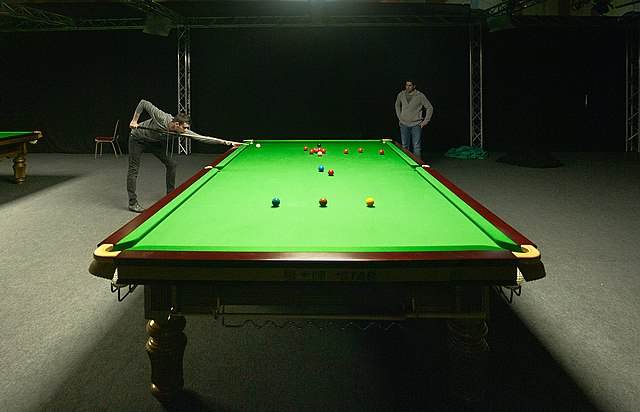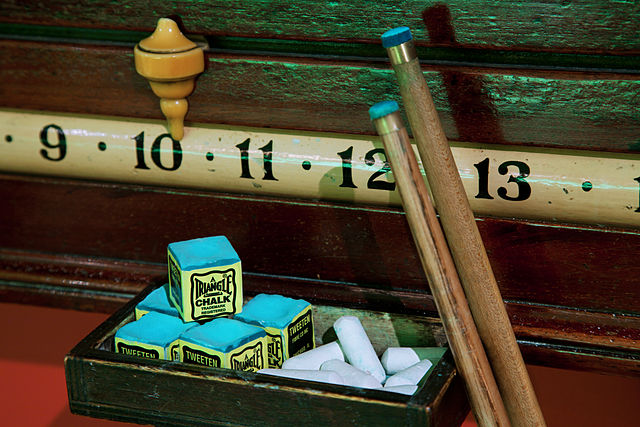Alexander Gordon Higgins was a Northern Irish professional snooker player and a two-time world champion who is remembered as one of the most iconic figures in the sport's history. Nicknamed "Hurricane Higgins" for his rapid play, and known as the "People's Champion" for his popularity and charisma, he is often credited as a key factor in snooker's success as a mainstream televised sport in the 1980s.
Higgins in 1968
Higgins (right) with David Taylor (left) at an exhibition at Queen's University Belfast, 1968
Higgins in 2008
Mural of Higgins at the Royal Bar, Belfast
Snooker is a cue sport played on a rectangular billiards table covered with a green cloth called baize, with six pockets, one at each corner and one in the middle of each long side. First played by British Army officers stationed in India in the second half of the 19th century, the game is played with twenty-two balls, comprising a white cue ball, fifteen red balls, and six other balls—a yellow, green, brown, blue, pink, and black—collectively called the colours. Using a cue stick, the individual players or teams take turns to strike the cue ball to pot other balls in a predefined sequence, accumulating points for each successful pot and for each time the opposing player or team commits a foul. An individual frame of snooker is won by the player who has scored the most points. A snooker match ends when a player reaches a predetermined number of frames.
Four-time world champion Mark Selby playing at a practice table during the 2012 Masters tournament
A full-size snooker table set up for the start of a game
A sliding scoreboard, some blocks of cue-tip chalk, white chalk-board chalk, and two cue sticks
A shot using a rest, allowing the player to reach farther down the table








